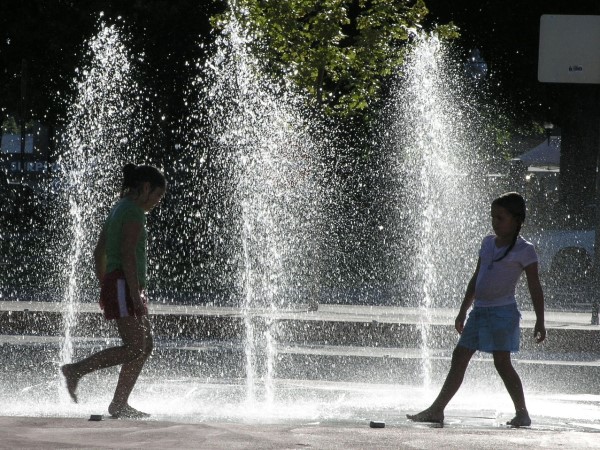
Cycling fully-fledged part of Dutch climate policy
To address climate disruption, the Dutch government presented its Climate Agreement on 28 June 28th, 2019.
The whole of Western Europe was hit by a scorching heat wave in the last week. In the Netherlands, temperatures rose as high as 40.7° Celsius, the highest temperature ever recorded in the country, and more than two degrees higher than the previous record set in 1944. Climate scientists agree that such weather conditions caused by climate disruption will happen more often and will be more severe than in the past.
To address the increasing threat of climate disruption, the Dutch government presented its Climate Agreement on 28 June 28th, 2019. Its main ambition is to reduce CO2 emissions by 49 % (as compared to 1990 emission levels) by the year 2030. The Netherlands will also lobby within the EU to achieve a 55 % reduction of CO2 levels by 2030, and support a net-carbon economy by 2050.
The Dutch cycling association and ECF member Fietsersbond is pleased with the outcomes of the Climate Agreement: “We have argued for promoting the bicycle as an indispensable link in our mobility system. And that happened. With the most tangible result being 75 million euros for bicycle parking at public transport hubs.”
The Fietsersbond is also happy with the recognition that the bicycle will become a fully-fledged part of the Dutch mobility system.
These are the five main results relevant for cycling that stem from the Climate Agreement:
1. 75 Million for Bicycle Parking
The bicycle is indispensable for public transport. Certainly, in the big cities, most train users come to the station by bicycle. To keep public transport as an attractive mobility option, the Fietsersbond believes it is important to invest in a smooth transition from bicycle to train. There will be 75 million Euro for extra bicycle parking at public transport hubs.
2. From 2030 onwards, cycling becomes a structural part of government policy
The government will include the bicycle as an integral part of spatial and mobility issues. This will make little difference in the short term, but from 2030 at the latest, when the mobility fund starts, the bicycle is no longer dependent on incidental budgets at the governmental level.
3. City logistics with freight bicycles
The Climate Agreement pays a lot of attention to stimulating delivery by freight bicycle in the context of zero-emission city logistics. Diesel buses are not good for the climate and not good for our lungs. Freight bicycles can take over the role of vans in urban areas. It is therefore important that cities develop routes where these freight bicycles can ride quickly and without danger to themselves and others. The Fietsersbond calls that network the ‘Fietsfamilienetwork’ (Bicycle family network). In addition to these broad and safe routes, freight logistics also need hubs for transferring cargo and places in inner cities where they can load and unload.
4. Cycling to work
Employers are going to encourage their employees to come to work in an environmentally friendly way. So on the bike. Eleven bicycle ambassadors are going to work hard for their cycling employees. In total, eight billion kilometers must be covered by bicycle and public transport instead of by car. To put this figure into context: the Dutch cycle about fifteen billion kilometers annually.
5. Allow bicycle projects to piggyback on large-scale infrastructure projects
There will be many large-scale infrastructure projects in the coming years. An excellent opportunity, for example, would be to include the construction of a cycle path when renovating a bridge.
The scorching heat that has recently passed through the Netherlands has also demonstrated that it will be necessary to make bicycle paths climate-proof. Examples of infrastructural damage caused by climate disruption include the removal of loose-fitting tiles and concrete slabs that rise due to extreme heat conditions. In short, conditions of exceptional drought and heat cause damage to bicycle infrastructure that could be addressed with more thoughtful and efficient solutions.
Relevant Links:
-
Dutch Climate Agreement, June 28, 2019 (in Dutch): https://www.klimaatakkoord.nl/documenten/publicaties/2019/06/28/klimaatakkoord
-
Fietsersbond reaction to Government Climate Agreement, June 28, 2019 (in Dutch): https://www.fietsersbond.nl/nieuws/fiets-volwaardig-onderdeel-klimaatbeleid/
-
Temperature record of more than 40 degrees Celsius in the Netherlands: https://www.knmi.nl/over-het-knmi/nieuws/temperatuur-door-historische-grens-van-40-c
-
Damage to cycling infrastructure caused by the heat: https://www.rtlnieuws.nl/nieuws/nederland/artikel/4305706/overal-komen-fietspaden-omhoog-door-de-hitte-dit-heb-ik-nog-nooit
Regions:
Contact the author
Recent news!
Upcoming events
Contact Us
Avenue des Arts, 7-8
Postal address: Rue de la Charité, 22
1210 Brussels, Belgium









